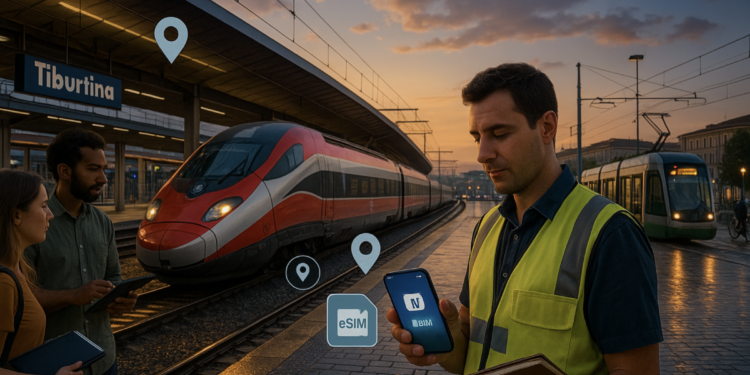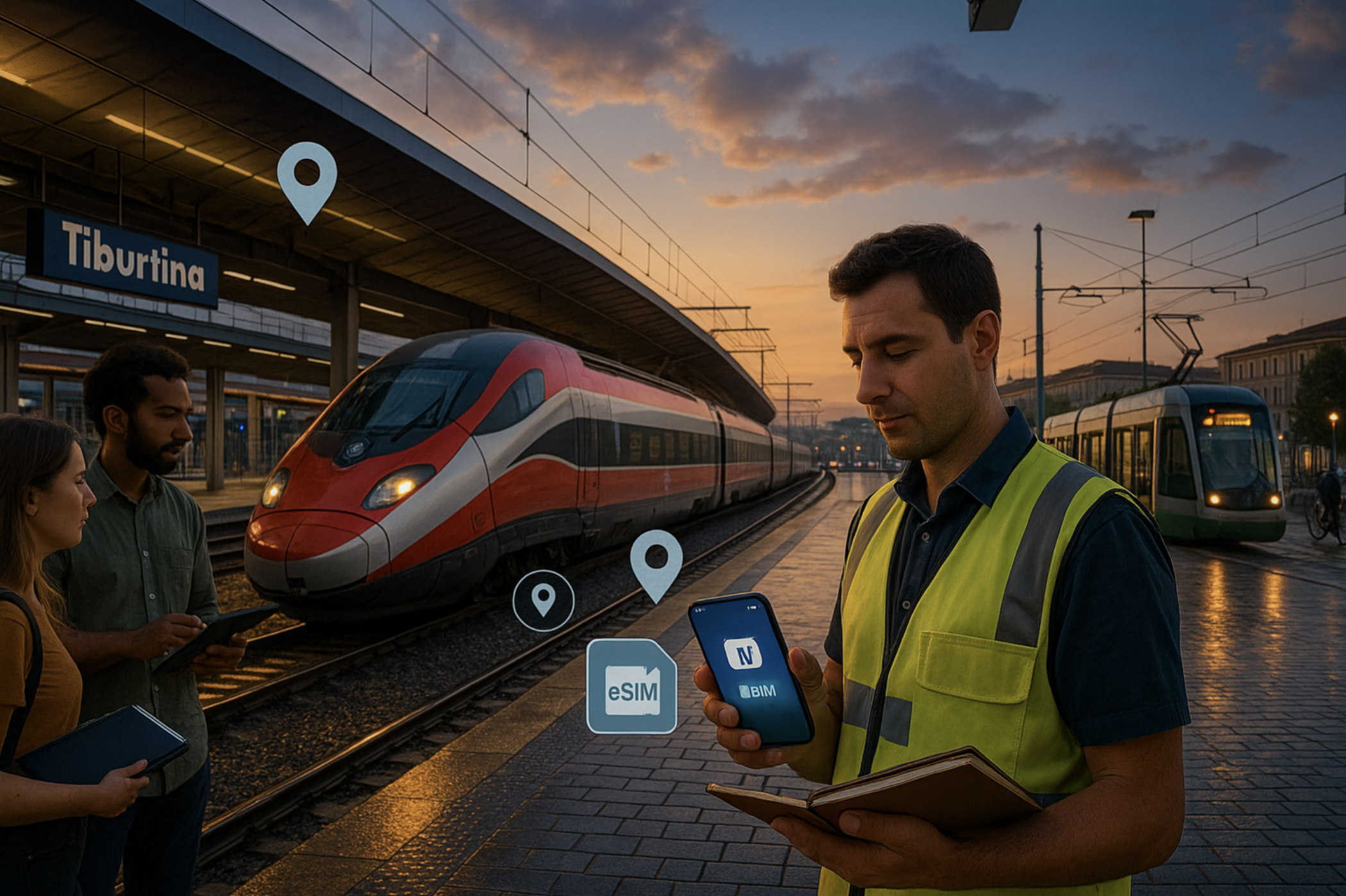Field Notes from Italy’s Transit Future: How U.S. Planners, Engineers, and Rail Fans Can Navigate High-Speed Hubs, Smart Tickets—and Stay Connected Seamlessly


Touchdown at Malpensa, regional train to Milano Cadorna, then a short hop to Porta Garibaldi: within an hour you’re watching Frecciarossa sets glide beneath a skyline stitched together by cranes and catenary. Italy is a field classroom where high-speed rail, revived trams, and station-area urbanism are all happening at once. If you’re a U.S. planner or engineer hunting for transferable ideas—or a rail fan doing a self-assigned study tour—this guide maps the must-see corridors and the practical tricks that keep you moving.
The High-Speed Spine: Reading a Country Through a Timetable
Italy’s HSR “spine” (Turin–Milan–Bologna–Florence–Rome–Naples–Salerno) is less a single project than a network behavior:
- Open access competition: Public Trenitalia and private Italo both run true high-speed service, creating frequency and price competition the U.S. rarely sees.
- Through stations vs. termini: Roma Tiburtina and Napoli Afragola show how through-running unlocks capacity; Milan and Rome terminal stations remind us what legacy constraints look like.
- Clockface logic: Even with disruptions, headways feel legible; transfers to regionals are usually a short walk from the HSR platforms.
What to study on the platform: dwell times, vertical circulation (escalator placement, mezzanines), platform edge management at the peak mixing HSR, InterCity, and Regionale.
Metro, Tram, and BRT: The Return of Surface Priority
Italy’s big cities are quietly rebuilding surface rail DNA:
- Milan M5 (driverless) proves automated metros can be threaded into dense fabric with tidy station footprints.
- Rome’s Metro C wrestles with archaeology and long delivery; it’s a case study in megaproject governance.
- Florence, Padua, Parma and others are betting on modern tramways—reliable, skepticism-resistant capacity in corridors where BRT would hit political ceilings.
- Bus Priority/BRT (e.g., in Rome and Bologna) shows a spectrum of interventions, from light-touch signal priority to fully separated lanes with station-like stops.
Transfer lesson: where fare integration is messy, proof-of-payment plus app validators still pull riders through pain points. You’ll see QR validators at station gates, on trams, and even on bus stops.
Station-Area Urbanism: The Rail Real Estate Playbook
Milano Porta Garibaldi/Porta Nuova stitches high-rise commercial cores to commuter rail and metro nodes, delivering a U.S.-relevant example of value capture. Bologna Centrale showcases vertical stratification that keeps regionals and HSR proximate without chaos. Around Roma Tiburtina, you’ll find the slow burn of TOD where the station arrived before the neighborhood matured—useful for U.S. cities planning new intercity nodes.
Walk the edges: bike parking logic, micromobility corrals, hotel drop-offs, and where last-mile freight meets passenger space. These details decide whether TOD thrives or stalls.
Working in the Wild: Tickets, Tools, and Data That Doesn’t Drop
Tickets & apps
- Italo / Trenitalia: buy early “Super Economy” fares, board by scanning a QR at the platform.
- Regional systems (Lombardy, Lazio, Emilia-Romagna): expect validators on platforms and on-board; keep a backup offline PDF of your ticket.
- MaaS helpers: city transit apps + Google/Apple Maps are fine; add local apps for live headways (e.g., ATM Milano).
Connectivity you can trust
Fieldwork needs uploads (photos, GIS notes), group chat, and hotspot for a laptop on a windy platform. If you’d rather skip kiosk hunts and roaming passes, consider activating esim italy before you fly; it’s a QR-code install with hotspot sharing, so your team’s CAD markup or press files go out on time.
A 72-Hour “Infra Crawl” Itinerary
Day 1 — Milan: Nodes and Driverless Ops
Morning at Milano Porta Garibaldi: watch HSR/regionals interleave; audit vertical flows from platform to street. Ride M5 end-to-end; note platform screens, off-board fare checks, and station footprint in tight quarters. Afternoon in Porta Nuova to study station-area public realm and corporate front doors built around rail access.
Day 2 — Bologna: The Transfer Machine
HSR to Bologna Centrale (fast). Time transfers between HSR mezzanine and regionals—clock the signage hierarchy and wayfinding color language. If trams are operating/under construction, walk alignments, stops, and priority treatments; sketch curbside management where tracks cross delivery bays.
Day 3 — Rome: Through-Running and Legacy Constraints
Start at Roma Tiburtina (through station): watch intercity/HSR glide through without reversing; evaluate concourse retail vs. passenger flow. End at Termini to feel terminus friction—approach throat complexity, tight platform heads, taxi/bus interchange. Evening BRT/tram ride for signal priority observations.
Field Toolkit for U.S. Practitioners
| Task | App/Workflow | Why it matters | Pro tip |
| HSR/Regional tickets | Italo / Trenitalia | QR boarding, flexible exchanges | Screenshot your QR; cell underground can falter |
| Urban layers | OSM + mobile GIS | Rapid curb/stop annotation | Cache tiles for tunnels |
| Photo & notes | Shared cloud folder | Team visibility, timestamped | Name files by station_line_time |
| Connectivity | eSIM with hotspot | Uploads, chats, CAD on the go | Activate esim italy pre-flight |
| Cost tracking | Spreadsheet + photo receipts | Per-diem reporting | Snap at point of sale |
What Italy Gets Right—and What Still Trips It Up
Right
- Choice on HSR: private/public competition yielding frequency and fare variety.
- Station placemaking: many nodes function as public squares, not just rail sheds.
- Tram resurgence: politically durable, legible surface capacity.
Wrong (or still hard)
- Fare silos: regional integration is improving but inconsistent; tourists and field teams feel the seams.
- Legacy termini: operational gravity around big downtown terminals drags on throughput.
- Procurement timelines: metro megaprojects remain vulnerable to archaeology/politics (bring patience and contingency).
Transferable Lessons for the U.S.
- Through-running beats heroic terminals. Tiburtina’s flows are a masterclass in capacity without reversing.
- Layer your network. Surface rail and BRT enable quick wins while metros grind forward.
- Treat stations as districts. The Porta Nuova/Porta Garibaldi pairing shows how real estate and rail co-produce value.
- Compete where you can. Italo vs. Trenitalia demonstrates how service quality reacts to rivalry—an angle for U.S. open-access pilots.
- Design for legibility. Color systems, platform displays, and QR validators reduce friction without big capex.






